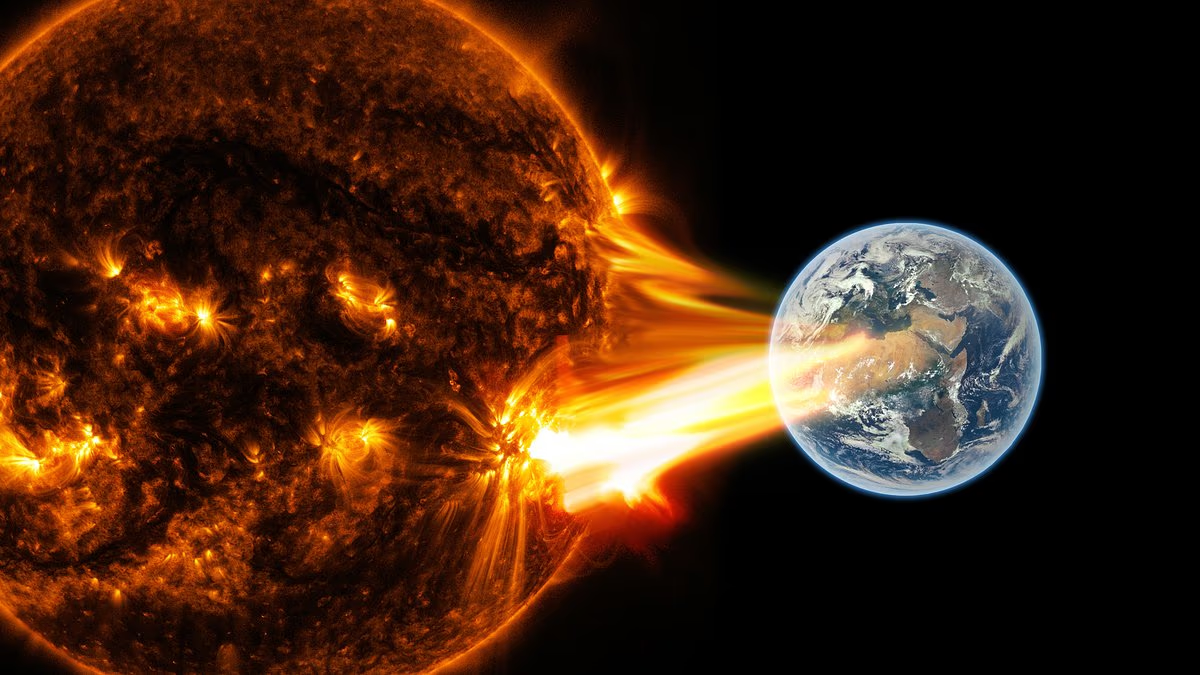A rare and powerful solar storm has rattled Earth’s magnetic field, triggering widespread alerts across the aviation, satellite, and energy sectors. The event, among the most intense in nearly two decades, has unleashed dazzling auroras, disrupted satellite operations, and raised concerns over potential power grid failures.
Double Solar Blast Hits Earth
On November 11, two fast-moving coronal mass ejections (CMEs) slammed into Earth, sparking a G4-class geomagnetic storm—one of the highest levels on the NOAA space weather scale.
The blast of charged solar particles ignited spectacular aurora displays visible unusually far south, with skywatchers in Florida, Texas, and Alabama capturing breathtaking scenes rarely seen at such low latitudes.
But while the view was beautiful, scientists warned it was also dangerous.
Ground Level Event Detected: A 20-Year Solar Explosion
Soon after, an enormous solar flare erupted from sunspot AR4274, bombarding Earth with high-energy protons capable of reaching the ground.
“This is a very significant event,” said Professor Clive Dyer of the Surrey Space Centre. “Neutron monitors worldwide are detecting a sharp increase in cosmic rays—a Ground Level Event (GLE).”
GLEs are extremely rare, occurring only once or twice every 11-year solar cycle. The last major one happened in December 2006, making this a 20-year solar radiation event.
During that 2006 storm, passengers on high-latitude flights were exposed to radiation levels up to 30 microsieverts per hour, around 20 percent above normal flight exposure. Preliminary data suggests a similar spike may have occurred this time, especially over polar flight paths, where radiation penetration is strongest.
Satellites and Aviation Systems at Risk
Satellite operators are reporting elevated radiation levels in orbit, as solar protons bombard sensitive spacecraft components. This can lead to:
- Malfunctions in onboard electronics and imaging systems
- Errors in satellite navigation and GPS accuracy
- Increased noise in communication and sensor data
In the aviation sector, flights traversing polar routes face communication blackouts, navigation interference, and heightened radiation exposure for crew and passengers.
NOAA on High Alert
The U.S. National Oceanic and Atmospheric Administration (NOAA) has issued continuous warnings as multiple CMEs continue to buffet Earth’s magnetic field. According to NOAA, severe geomagnetic storms can:
- Disrupt GPS and satellite navigation
- Interfere with high-frequency aviation communications
- Cause short-wave radio blackouts
- Impact spacecraft and power infrastructure
Power Grid Vulnerabilities
While auroras light up the skies, power grid operators are on alert for a more serious threat—geomagnetically induced currents (GICs). These powerful currents can flow through long transmission lines, damaging transformers and triggering widespread power outages.
Historical records show the risks are real:
- 1859 Carrington Event – telegraph wires sparked and caught fire
- 1972 Solar Storm – believed to have detonated U.S. Navy sea mines near Vietnam
Experts warn that today’s interconnected electrical networks are even more vulnerable.
Approaching Solar Maximum: What’s Next
Scientists note that the current Solar Cycle 25 is nearing its peak, a period when solar storms grow stronger and more frequent. Despite advances in space weather forecasting, predicting these events remains difficult—warnings often come only hours before impact.
“Continuous monitoring and rapid response are critical,” Dyer emphasized. “This event is a wake-up call for how dependent modern life has become on space-based technology.”











